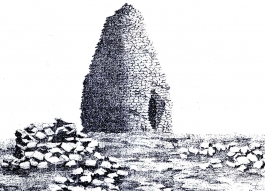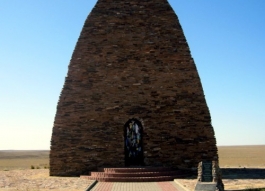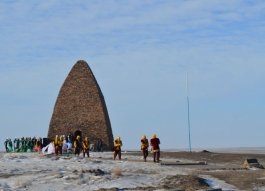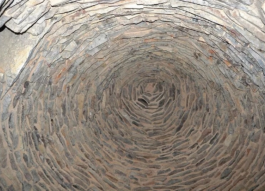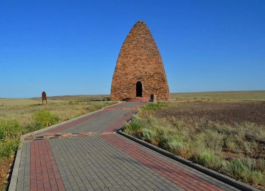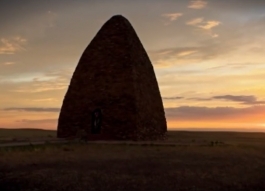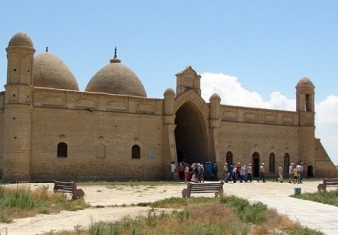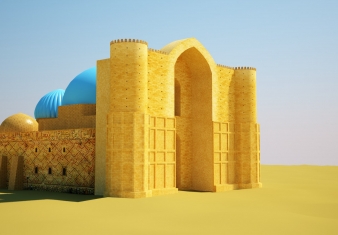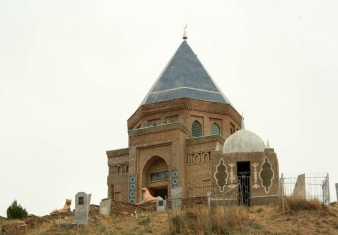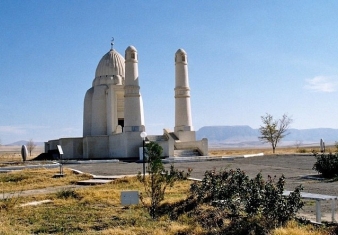 Holy places
Holy places
47.2908, 79.719
The old and very beautiful legend about love between Kozy-Korpesh and Bayan Sulu is somewhat reminiscent of the world-known story of Romeo and Juliet, and probably, epics of many nations have such stories of eternal love. Kazakh legend is beautiful and romantic, it cannot leave anyone indifferent, and at all times there are people really feeling with the heroes of the steppe novel.
Childhood friends Sarybai and Karabai vowed to marry their children, who had been betrothed before their birth. Sarybai dies during hunting before the birth of his son. Having grown up Kozy and Bayan have not seen each other yet, but being tied the knot, they finally fell in love with each other. Time passes and treacherous Karabai changes his life plans. He promises to give his daughter to a local paluan Kodar, who once has saved his flock from jute.
Kodar becomes a barrier between two lovers. Among this eternal triangle, Kozy was the first who fell on the field of battle. Soul-sick Bayan resorts to trickery in order to take revenge on the killer. She promises to marry Kodar if he digs a well with spring water for her. Kodar gets to work, when deepening he holds the hair of insidious Bayan. The girl suddenly cuts her plait and Kodar falls into the abyss and dies. Thus she revenge Kozy's death.
The heroine of the legend stabs herself with a dagger on his grave. The old men say that the dumping was overgrown with marvelous bush rose hips, which once bloomed scarlet and white roses ... The flowers, however, did not please the eyes of the traveler for long. They wilted, blackened and withered...
This lyric poem of the Kazakh people attracted interests of playwrights, ethnographers, and historians of many nations for many years. One of the first recordings of the legend was made for A.S. Pushkin and preserved in his archive.
At the end of the last century, the famous explorer of Central Asia and Kazakhstan G.N. Potanin wrote: "... My favorite story known for the whole steppe from Orenburg to Zaisan, the top of the Kazakh ethics, is the story of the belle Bayan Sulu, who fell in love with Kozy-Korpesh..."
The Kozy-Korpesh-Bayan Sulu Mazar was erected near the village Tansyk, Ayaguz district of the East Kazakhstan region. The Mazar is widely regarded as one of the oldest survived monuments in Kazakhstan.
According to some researchers, this monument was erected in the V-X centuries, according to others - in the X-XI centuries. The total height of the Mazar is 11.65 m., the wall thickness is 1.86 m. From the east, the mausoleum's entrance has small windows with sizes of 0,7 × 0,5 cm.
Four sculptures depicting Kozy-Korpesh, Bayan Sulu, her younger sister and sister in law are set before the mausoleum's entrance.
Originally volumetric composition of the Mazar at the square plan (from the outside 7,1 × 7,1 m, with internal 3,38 × 3,38 m) was a four-sided pyramid made by means of lapping rows of horizontal laying and topped with a shaped spire. Scientists and travelers were interested in this ancient structure, with its unusual architectural form, and in particular, its history at all times.
Records of some researchers of the XIX century who visited the monument have survived. Shokan Ualikhanov, who visited the monument in 1856, was struck by its height: nine people had to mount each other to get the top of the dome.
Sketches made by the Kazakh scientist ethnographer, in which he portrayed the stone sculptures standing near the monument, are of particular value.
In 1982 the Mazar of Kozy-Korpesh-Bayan Sulu was put into the list of Kazakhstan cultural and historical monuments of Republican significance and taken under state's protection.
Arystan Bab Mausoleum is a mausoleum in Kazakhstan close to the village of Kogam and Otrartobe.
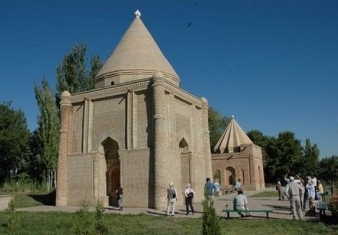
The Aisha-Bibi is in the west of Taraz, Kazakhstan on the Silk Road. It is locally famous as a monument to love and faithfulness.
The religious structure continues to draw pilgrims from across Central Asia and has come to epitomize the Kazakh national identity.
Baydibek Karashauly (dates of birth and death are unknown) lived in the 11-12th centuries in the neighborhood of East Karatau, died in present Algabas district, near Aktas stud and buried on the river bank of Balabogen. The tomb established still in the ancient time with a dome remained.
Domalak Ana Mausoleum is a unique architectural monument of the South Kazakhstan.
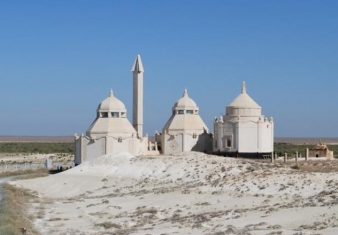
Beket-Ata Underground mosque is located in the Oglandy countryside, Mangystau region. This religious monument of architecture dates back to the XVIII century. Beket-Ata is considered as a holy place, in importance as a burial of Khozha Ahmed Yassaui. During two centuries, pilgrims come here for bowing the Holy Spirit.














